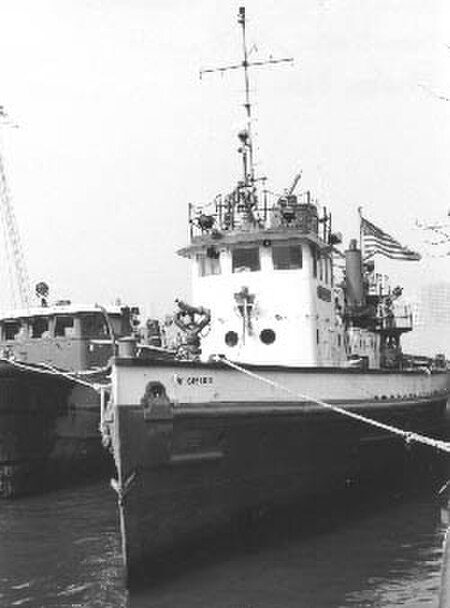John J. Harvey

John J. Harvey is a fireboat formerly of the New York City Fire Department in New York City, famed for returning to service following the September 11, 2001 attacks. She is among the most powerful fireboats ever built, capable of pumping up to 18,000 gallons of water a minute. Launched in 1931, John J. Harvey had a distinguished career in the FDNY until her retirement in 1994. She was named for marine fireman John J. Harvey, killed when a ship exploded during a fire. Among the marine fires at which she assisted were the Cunard Line pier fire in 1932, the burning of Normandie in 1942, the ammunition ship El Estero in 1943, and the collision of the oil tankers Alva Cape and Texaco Massachusetts in 1966. Her official designation at the end of her career was Marine 2. John J. Harvey was sold, at auction, in 1999, to a private consortium of marine preservationists determined to prevent her from being scrapped. In June 2000 she was added to the National Park Service's National Register of Historic Places. Her current owners have thoroughly restored her, and host frequent free trips on the river. She is currently moored at North River Pier 66, located at 12th Avenue and 26th Street on the Hudson River. In 2018, she was repainted at the Caddell Dry Dock, Staten Island, in a red and white dazzle pattern as part of an art project by Tauba Auerbach, in commemoration of the dazzle camouflage used on World War I ships.
Excerpt from the Wikipedia article John J. Harvey (License: CC BY-SA 3.0, Authors, Images).John J. Harvey
Hudson River Park Esplanade, New York Manhattan
Geographical coordinates (GPS) Address Nearby Places Show on map
Geographical coordinates (GPS)
| Latitude | Longitude |
|---|---|
| N 40.75 ° | E -74.010833333333 ° |
Address
Pier 64
Hudson River Park Esplanade
10011 New York, Manhattan
New York, United States
Open on Google Maps









